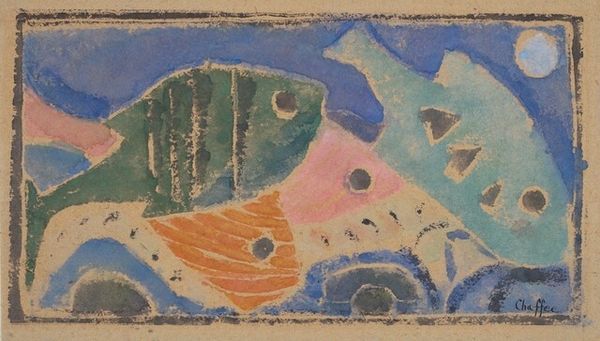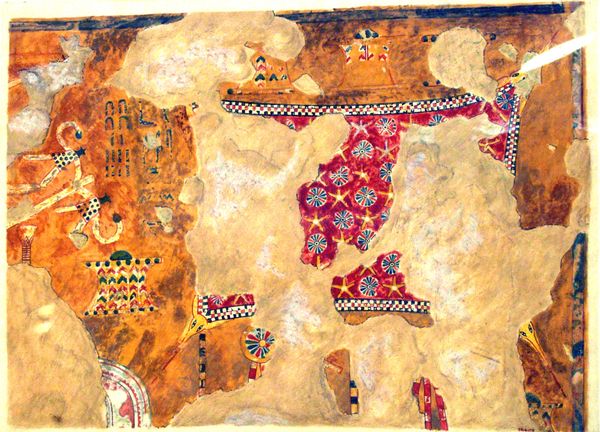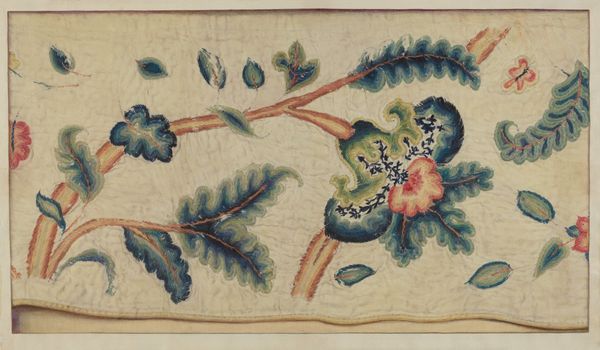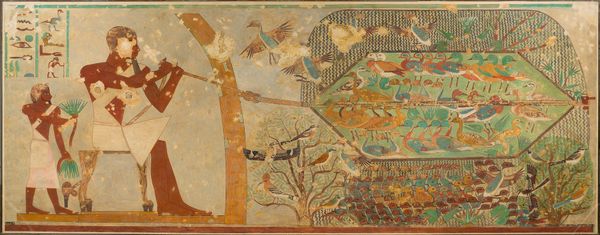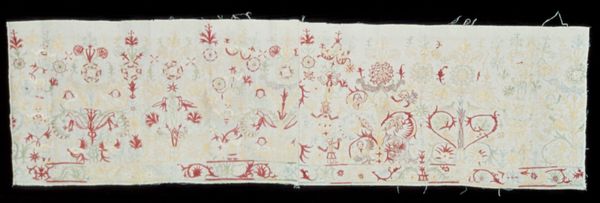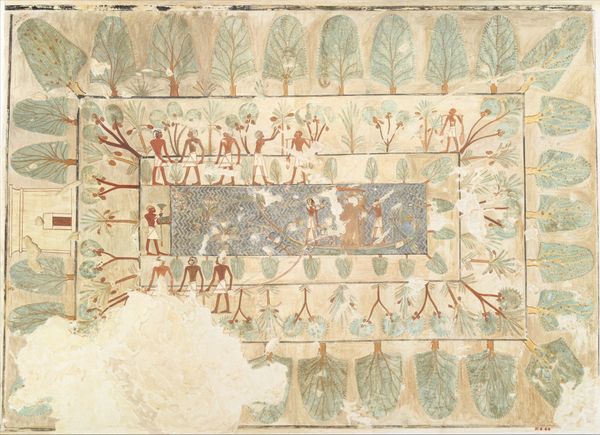
painting, watercolor
#
abstract painting
#
painting
#
landscape
#
fantasy-art
#
figuration
#
abstract
#
watercolor
#
expressionism
#
modernism
Copyright: Public Domain: Artvee
Curator: The first impression is so evocative – almost dreamlike, but tinged with a gentle, knowing sadness. It's beautiful in a haunting kind of way. Editor: What you are responding to is Paul Klee’s watercolor and oil transfer drawing "Fairy tale of the north", executed in 1930. The setting certainly plays into the imagery's themes. What captures your attention, initially? Curator: It's the way everything seems to be glowing from within. The colors are muted, yet they pulse with an inner light. Especially those little eyes dotted across the scene – peering out, alert, a little lost. Are they a symbol of something? Editor: Well, it’s 1930. Europe is still reckoning with the immense devastation and social changes brought about by WWI, there’s the rise of Fascism. Klee lost his teaching post with the Nazis just three years later, branded a ‘degenerate’ artist. This fairytale feels… brittle. Not exactly optimistic. Perhaps these wide eyes register both trauma and cautious watchfulness? Curator: Absolutely. There’s an undeniable anxiety hovering over this idyllic scene. I mean, is it idyllic? We have what could be construed as animals or figures, but with those stark, searching eyes – it pulls you in and makes you slightly fearful for their fate. Editor: Klee uses that tension to great effect, juxtaposing playful figuration with complex historical undercurrents. This fairy tale aesthetic acts as a mirror reflecting on public and private consciousness shaped by trauma. He questions whether fairytales can offer authentic forms of escape, and if so, to what extent. Curator: A visual elegy, almost. I imagine Klee trying to create a comforting fantasy, knowing it's paper-thin. The orange of that setting sun is too vivid to belong. What else do you see when you reflect upon this painting, its position and legacy? Editor: Looking closer, one also recognizes the influence of modernism seeping through; and by framing figuration through fantasy art, we are reminded to confront a deeper interrogation of form. The 'Fairy tale of the north’ uses fantasy not just to transport but to demand. To demand more critical introspection about society. Curator: He asks us to consider the function and nature of memory. Editor: I'm inclined to agree.
Comments
No comments
Be the first to comment and join the conversation on the ultimate creative platform.

